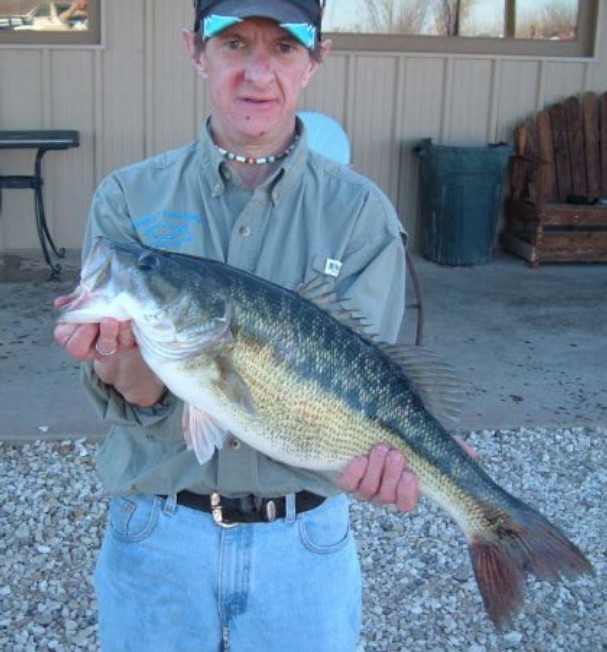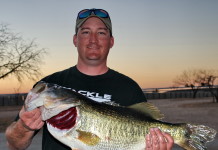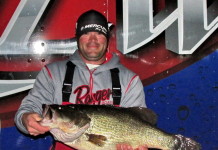Lake Alan Henry near Lubbock may not be producing largemouths for the Toyota ShareLunker program the way it did from 2004 to 2006 when it churned out 18 entries exceeding 13 pounds, but its depths have given up another type of lunker — the spotted bass.
Erik Atkins of Lubbock was fishing in a tournament in January 2011 hoping to bolster his largemouth haul when he got an unexpected surprise. Atkins was throwing a worm rigged on a shaky head jig in 3 to 5 feet of water in a rocky area when a good fish hit his offering.
After battling the bass to the boat he discovered the 5.62-pounder looked a little different. Atkins kept the fish and upon inspection it appeared to be a spotted bass, which was confirmed later as the largest of its kind caught in Texas.
The previous record of 5.56 pounds was caught from East Texas’ Lake O’ the Pines in 1966.
Like the thriving largemouth population in Alan Henry, the rising spotted bass numbers in the lake are due to TPWD stocking efforts, though on a much smaller scale. The lake received almost 300,000 largemouth fingerlings and a few hundred adult fish in 1993-94, more than 7,000 fingerlings spawned directly from ShareLunker fish and another 144,000 fingerlings in 2009 in the largest stocking efforts.
Meanwhile, the lone stocking of 150 adult spotted bass came in 1996, and in turn the lake has become the only one in the state with a population of the Alabama variety.
Veteran inland fisheries biologist Charlie Munger has said the offspring of the spotted bass stocked in Alan Henry can be traced back to the Mobile Bay drainage of Alabama and have a similar growth rate to largemouths though they don’t get as big. He said they live longer than Kentucky bass, another type of spotted bass that are native to the Ohio and Mississippi River valleys, and which also can be found in streams and rivers in East Texas.
Because it’s tough to differentiate between those two varieties, they both are considered “spotted bass” for records purposes. The spotted bass similarities also can cause confusion for anglers who have never caught one since they mimic largemouths at first glance. However, there are ways to distinguish the two. The lateral line on spotted bass is broken while largemouths have a definite lateral stripe, and the spots that give spotted bass their name are formed in rows on their lower sides. Another way to tell a difference is to hold a fish’s mouth closed and see how far back it reaches.
If its mouth goes past the orbit of the eye, the fish is a largemouth and if it reaches to the center of the eye it’s a spot.
TPWD offers an identification guide for largemouths, smallmouths and spotted bass on its website.
While some varieties of similar fish spawn to create hybrids, Munger has said a study of spotted bass in the lake has revealed no evidence of hybridized fish. He said the lake’s habitat that includes large areas of flooded timber and vegetation, and rocky areas has been conducive to not only producing big largemouths and spotted bass but also making it easier to find fish, especially for anglers who enjoy sight fishing.
He said because the lake has maintained its water level for most of the past decade and because of the numerous arms and coves, it hasn’t been affected as much by silt and other particulate and made it much clearer than other bodies of water across the state.
Spotted bass share similar tastes to largemouths when it comes to diet and spawning efforts, and should you be targeting fish in the shallows during the spring, there’s a good chance you too will catch a spotted bass from Alan Henry.
It’s one more big reason to hit the water during the spring spawn.




















